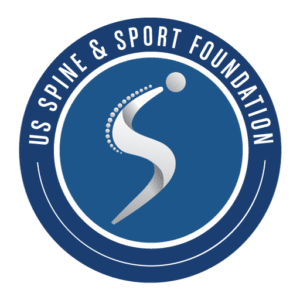December 13, 2018, San Diego, CA: Charity Lane publishes innovative article on matching exercise programs to job demands in firefighters
December 13, 2018, San Diego, CA: Charity Lane publishes innovative article on matching exercise programs to job demands in firefighters
A peer-reviewed article led by Charity L. Lane, MS, MA, CPT, FNS – Director of Program Development for US Spine & Sport Foundation – was recently accepted for publication in the journal WORK, titled “Comparison of the firefighter Candidate Physical Ability Test to weight lifting exercises using electromyography” (1). It will appear in a special section on firefighters in the March 2019 issue of the journal WORK.
About the article
Firefighters encounter very stressful, physically-demanding, and dangerous scenarios throughout their career, resulting in development of an array of musculoskeletal injuries and cardiovascular disorders. While muscular strength and endurance are important for firefighting, matching resistance exercises to firefighter job demands has not been well-studied and implementation practices are not ideal.
The article reports on a study comparing the surface electromyographic (EMG) activity of major muscles during the Candidate Physical Ability Test (CPAT) to weight lifting exercises in 13 career firefighters. The study design was novel and involved intricate procedures and analysis techniques carried out in a “real-world” setting. The weight lifting exercises completed were: back squat, Romanian deadlift (RDL), overhead press, bent-over row, banded RDL, glute hyperextension, and kneeling rotational throw The CPAT is a standardized firefighter occupational physical fitness test for firefighters comprised of 8 events: hose drag, equipment carry, ladder raise and extension, forcible entry, search, rescue, ceiling breach and pull, and stair climb.
The study’s results demonstrate that firefighting activities place a large demand on the posterior chain and core muscles, which is consistent with the team’s previous work (2). The selected weight lifting exercises (at the prescribed loads) are safe for firefighters and sufficient to activate the vast majority of muscles required during the CPAT. However, additional movements are required to activate the oblique abdominals. Clinicians and trainers can use this information to design resistance exercise programs to closely match firefighting activities.
Building upon this work and other efforts, Charity Lane and John Mayer, DC, PhD, FACSM – Scientific Officer for the Foundation – will incorporate individualized exercise approaches for firefighters in a $1.2 M FEMA grant – recently awarded to them – to implement a regional firefighter wellness program.
For more information on our first responder initiatives, see: www.usspineandsportfoundation.com.
(1) Lane CL, Mayer JM, et al. Comparison of the firefighter Candidate Physical Ability Test to weight lifting exercises using electromyography. Work (accepted for publication).
(2) Lane CL, Mayer JM. Medical report: Posterior chain exercises for prevention and treatment of low back pain. ACSM Health & Fitness Journal, 2017;Jul/Aug:46-8.
